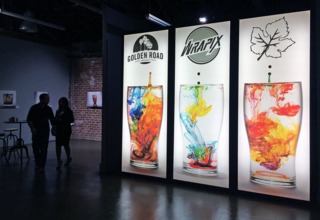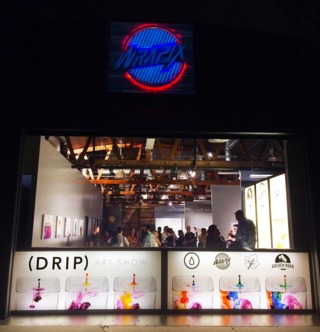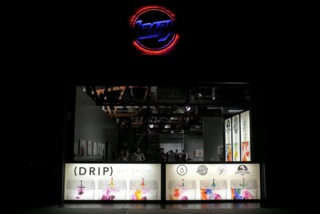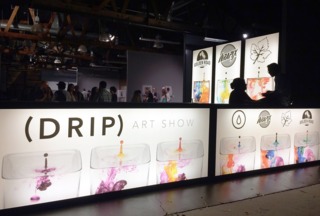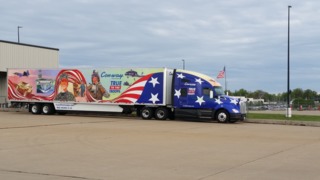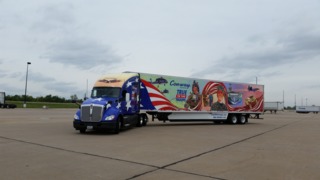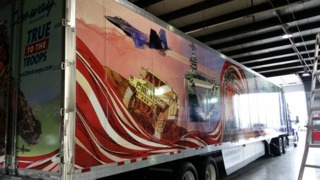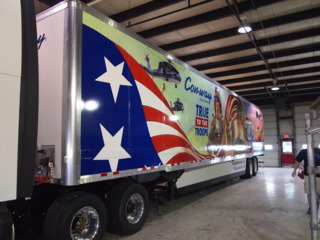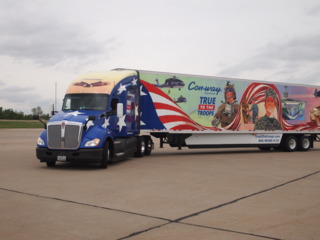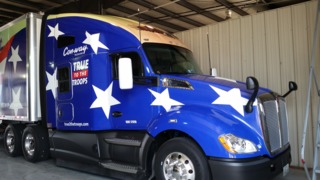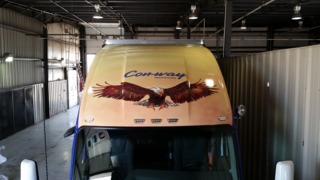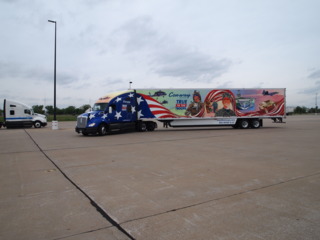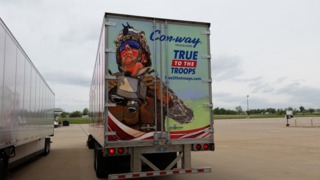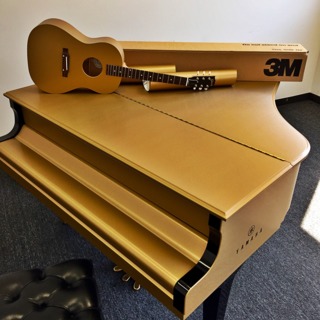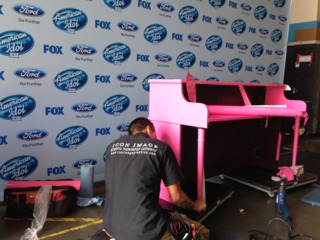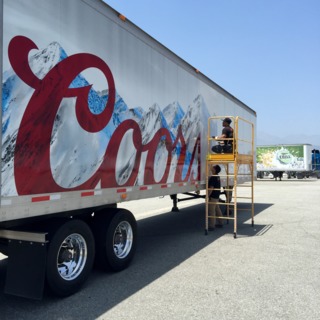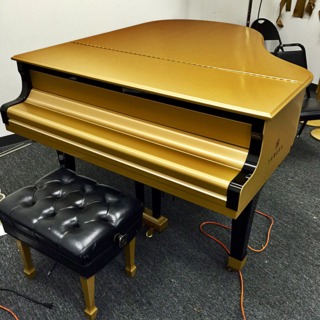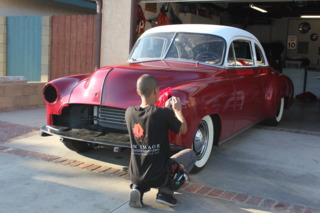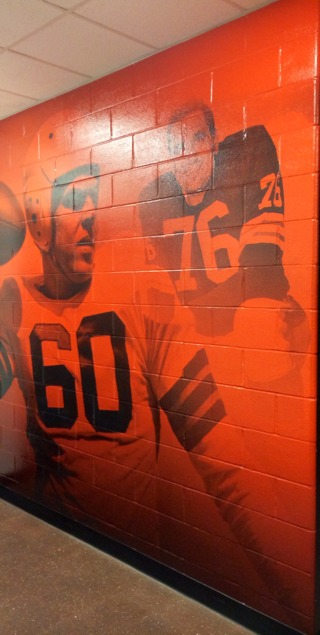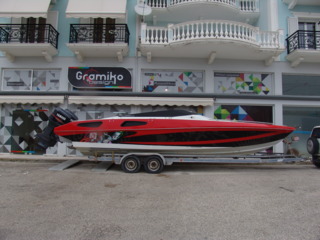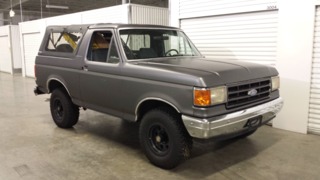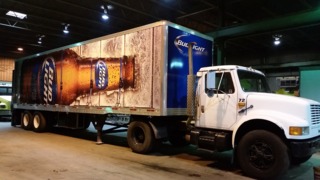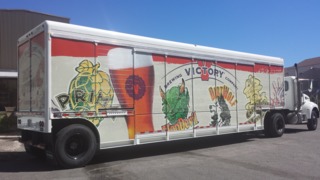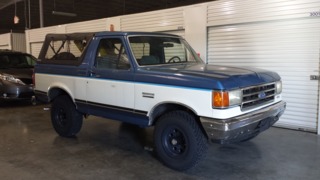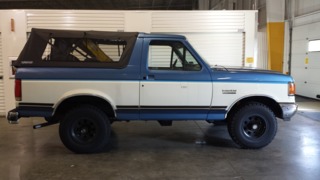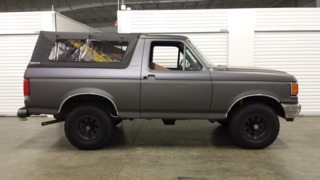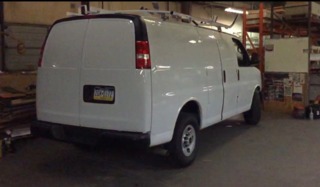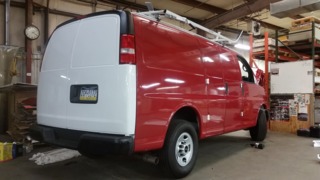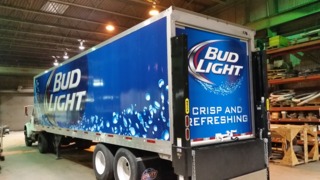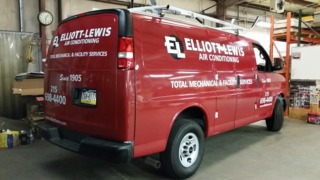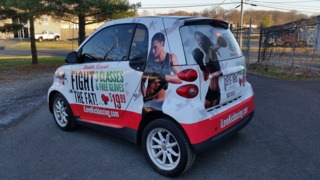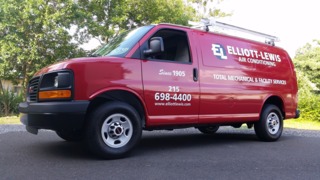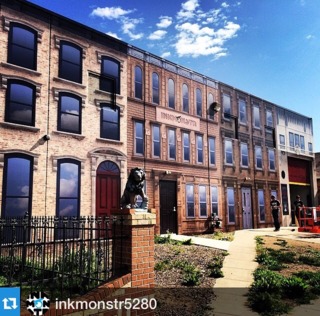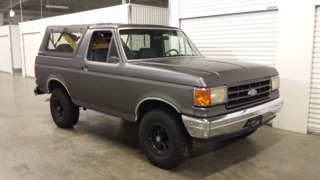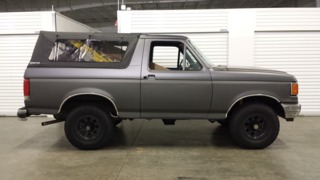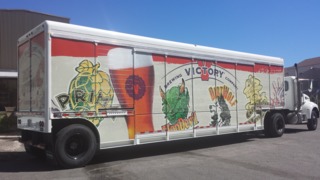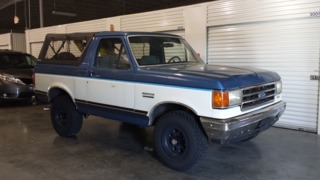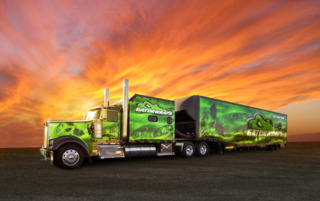Wraps Aren’t Just for Vehicles Anymore
Look beyond the traditional applications to expand and grow the business.

When you hear the word “wrap” the traditional vehicle wrap is probably what comes to mind. And while that is certainly a big market, there are opportunities beyond the single-vehicle wrap that you might not have considered, and can help grow the business to new heights.
The first, and perhaps most obvious, opportunity in the wrap market is in fleet graphics. While these will include traditional car wraps, often fleets also include things like vans, trucks, delivery vehicles and even other types of equipment. And for a print service provider (PSP), winning this type of client can mean long-term work that continues to grow as the client expands.
“You find a business that has multiple vehicles and you get that whole project verses the business who has one vehicle,” noted Kim Cunningham, owner/operator, Night Owl Graphics, and a 3M Preferred Graphics Installer. “Now don't get me wrong, there will probably be more one-vehicle businesses than fleet opportunities, but as far as your greatest opportunity, in my opinion, is fleets.”
“As business grows, it becomes more difficult to give the time and attention as when you are a startup,” said Rod Voegele, President, Gatorwraps. “Fleet customers are looking for one design, then fit it to multiple units. This allows a shop to give great service while growing exponentially.” He continued, “Expanding on that, we do a lot of cars, and a lot of that business are one offs. There is a lot of hand holding, explaining the sale and managing expectations. There are a lot of elements to that first job. But on a fleet, you do all that once, then once you get colors and design right and they’re happy, it’s just fitting it to the new vehicle. There are a lot of steps you can eliminate on repeat jobs, and that’s where a shop’s future is. It is more profitable and takes less steps.”
Beyond the fleet, however, there are other opportunities for wrapping that you might be overlooking today. For example, corporate and environmental wraps is a trend that is beginning to gain steam in many industries. “Many companies are finding value and appeal in a casual, professional and inspiring environment for their employees and visitors,” said Rob Ivers, of Rob Ivers Inc.
“Without a doubt, the greatest wrap opportunities are environmental: walls, windows and floors,” agreed Amy Swaile, associate marketing manager, Distribution Products, Mactac. “Vehicle graphics tend to get the most attention, but wrap opportunities are not limited to mobile. In fact, many traditional wrap shops are actively looking for ways to expand their wrap prospects and increase profit margins through the addition of environmental wraps. Take a moment to think about the last time you went to
the bank, grocery store, amusement park, mall, movie theatre… I bet you saw an example of an environmental wrap. Any place with floors, walls and windows has wrap potential. This includes building exteriors, sidewalks and skyscrapers!”
“Many property management teams are looking for ways to improve the look of their office and business interior spaces,” said David Conrad, director of sales and marketing for Mutoh America. “One way of doing this is adding custom wall coverings to the interior walls, rooms and reception areas. Corporate entities like banks, hospitals and office complexes are also finding new ways to improve the look of their interior walls through wraps. Whether it’s customizing spaces with corporate colors or slogans, creating specific sections highlighted by graphics within a grocery store, or personalizing wings of a hospital or conference rooms, interior wraps are becoming more and more popular. The sheer size of these applications is value enough to keep your printer churning and your installers busy, not to mention the added revenue dollars are always nice too.”
“Non-traditional is the best opportunity to grow the wrap business beyond the clients that are looking for automotive or fleet vehicle wraps,” noted Eric Nelson, senior graphic designer at PMG Wraps in Corona, Calif. “Wall wraps have always been a fall back, but front-to-back graphics for businesses—from street signage updates, window graphics, front or service counters, cabinet refacing, wall to wall floor graphics, meeting room wall images, office signage, even table tops and bathroom wall wraps—are all viable options.”
Going even further outside the traditional definition of a “wrap,” Sino Tour, director of operations for Icon Image Graphics, cited the entertainment industry as a new and rich source of potential. “The most interesting, if not challenging, projects that we have faced have been with specialty wraps for the entertainment business such as commercials, film, theater and award shows. Most of these wraps are shrouded with much secrecy, especially with projects that have so much money or a famous brand or person behind it. Nothing can really be revealed until the project is released. We have done so many picture-car wraps, such as the 2015 "Nissan Ride of Your Life" campaign, tons of instrument wraps for artists such as Miranda Lambert and Pharrell, a new Heisman Trophy print/commercial ad and the enormous floor and reflective graphic for film director Baz Luhrmann's Las Vegas/Cirque du Soleil Theatrical extravaganza. There is a certain type of artistry and skill set required to do these types of projects with a quick turnaround, and to work with amazing, prolific artists and clients does involve a lot of pressure. Paint was always the number one choice for many of the designers and artists that we have worked with, but with the introduction of vinyl film as an option it has literally blown up in Hollywood and they are excited to incorporate some special films into their creations.”
It doesn’t have to be limited to Hollywood studios, either. Almost anything can be wrapped, noted Cindy Richards, regional technical specialist, Avery Dennison. “Laptops, cell phones, shoes, cabinets, countertops, musical equipment, tool boxes and tractors have been wrapped in Avery Dennison graphic films. If it’s a non-porous substrate, anything can be considered.”
Getting the Word Out
It’s not enough to target potential new markets and applications for wraps, you have to build the expertise first, and then get the word out. “As with any skilled trade, practice is what makes success,” said Richards. “Practice is critical before selling the first job. The same tools and materials are used for car wraps and boats, jet skis, helmets—it’s the practice and technique that is important to ensure the customer's satisfaction.”
“Get that first job and word of mouth will travel wide and far,” noted Conrad. “Working with contractors, realtors, office and property managers and developers are good places to start. Work with the local hospital or nursing home and offer to do a small project in a highly visible location like a lobby or waiting room where people will see it and ask questions. Seeing is believing, get people talking. Better yet, work with the local car dealers where you are wrapping their fleet vehicles and offer to do their waiting room, offices or show room. Start with the contacts you know and work out from there.”
“PSPs can start off marketing these services to their existing commercial clients. Information about the possibilities for a potential client are hard to describe, a quick comp to show the client the potential is worth everything,” said Nelson, who uses a Mimaki CJV300 to produce his projects. “Talk less about what you can do and show the possibilities, even at your own expense. Even if the client doesn’t jump on the opportunity you’ll have something to show the next client.”
“My dad always says, employees can make or break any company,” noted Cunningham. “So, hire the right people. If you have the time and skills, someone with the right attitude can be trained—auto body shop guys usually have some basic knowledge/skill. Otherwise, hire someone with wrap experience or at least sign/vinyl experience. Once you have your employee(s) in place, practice, practice, practice. Have them practice on your vehicle, buy a door or bumper from a scrap yard, etc. The last thing you want is for their first job to be on a customer’s vehicle and have it come back for installation failure. Also, knowledge is power. Learn your products and get connected with others in the industry.”
“My belief is again, practice what you preach,” said Ivers. “Wrap your company vehicles and office walls, windows, floors, etc. Make sure they are flawless or close to it. Get really good at what you do through proper training and practice. At that point people will see what you have, notice how good it is and either want theirs done – or tell their others about you. Let’s face it, wraps should be pricey if done well.”
And wrapping your own vehicles is one of the best way to both get in that practice, as well as get the word out on what your shop is capable of creating. “The first thing is to wrap the vehicle you drive,” stressed Voegele. “So many shops just do a tailgate, and I speak to them and say if you offer it, why don’t you wrap it? They say it’s a personal vehicle, but you have to be committed. I get stopped 6-7 times a week wherever I might be by someone who wants to talk to me about wraps.”
“You MUST have your work vehicle(s) wrapped,” agreed Cunningham. “It's the most cost effective form of advertising and creates thousands of impressions per day.”
To take it a step further, social media, rather than traditional advertising, is one of the best ways to promote wrap projects. This is the type of work that is best sold when people can see a wide range of
ideas along with the quality of work you do, which is where social media excels. “I think the addition of social media marketing is one of the best ways to advertise for these services, since our business is so visual,” noted Adam Sumner, owner of Wrapix Academy and a 3M Graphics Authorized Trainer/Tester. “Instagram and Facebook have been vital in spreading the word of what services we can offer.”
“Social media, especially Instagram, has helped wrap shops and installers market their offerings to potential customers,” Richards noted. “Photos and portfolios of work with a polished Website are integral to attracting new business and help to keep current customers interested in the business.”
Interactive sales tools are also effective, noted Swaile. “It’s well known that sales tools are great selling ‘buddies.’ As most people tend to be kinesthetic—learning through touch and feel— the more interactive the tool, the better. This is exactly why Mactac created and launched DesignScape3D…a hands-on, user-led tool for showing potential clients the vast wrap options available to them.”
It has to be about more than just showing off pretty pictures, however. Selling wraps is also about educating customers on exactly what is possible and how it works, and not just the technical aspects. Selling the value of a wrap and what it can do for the business, rather than treating it like another commodity, is a crucial element of building a profitable business in this niche. “One thing that we can always do better as an industry is to educate our own customers on the film options available to them,” said Sumner. “In my opinion, at least in the Los Angeles area, we have fallen victim to price wars. Sometimes the cost of films and the cost for the installation get mixed up. Using cheaper films makes the installation process more difficult, and in return costs more money. Sometimes using a higher grade film with a better adhesive or air release can drastically change the install times, saving hours of labor and headaches.”
And one more thing to consider: don’t just promote that you know what you’re doing, prove it with certifications. “Get certified by companies such as 3M, Avery Dennison, or Hexis for example, “ said Tour “it makes your company stand out from the rest because it shows that you know what you are doing when it comes to the art of wrapping.”
When it comes to wraps, it’s time for PSPs who are serious about growing their business to think outside the traditional vehicle. For a shop willing to do what it takes to master the skillset needed to do amazing wraps, and willing to take those skills and market them to nontraditional applications, the sky is the limit.
“The opportunities for wraps are nearly endless,” said Richards. “PSPs can be creative and look outside the box at consumer products such as furniture, appliances, electronics etc. that can be personalized for the customer. The greatest opportunity a PSP or installer has is to make sure they have the skills to do the job well.”

